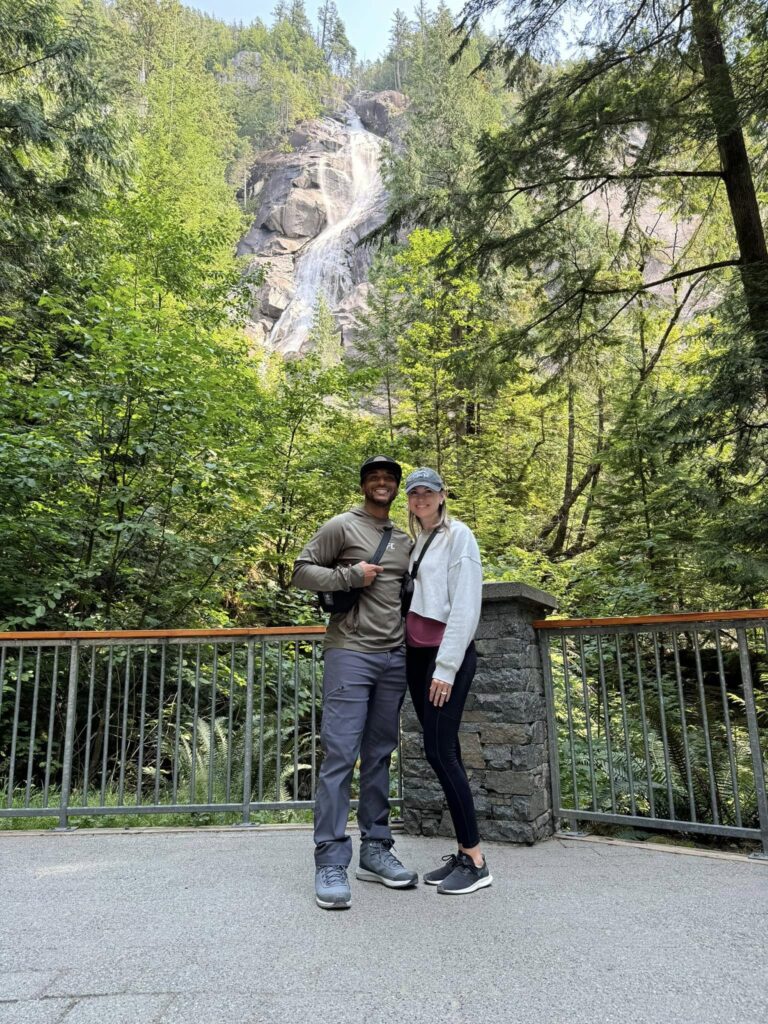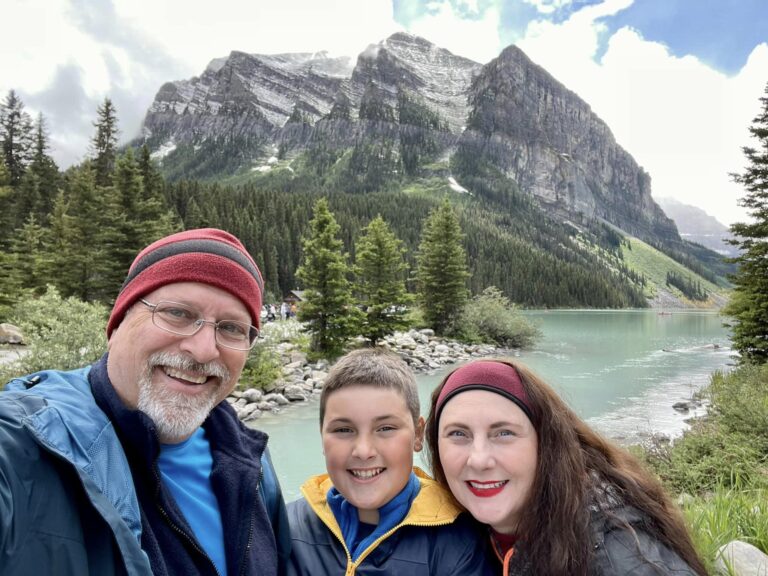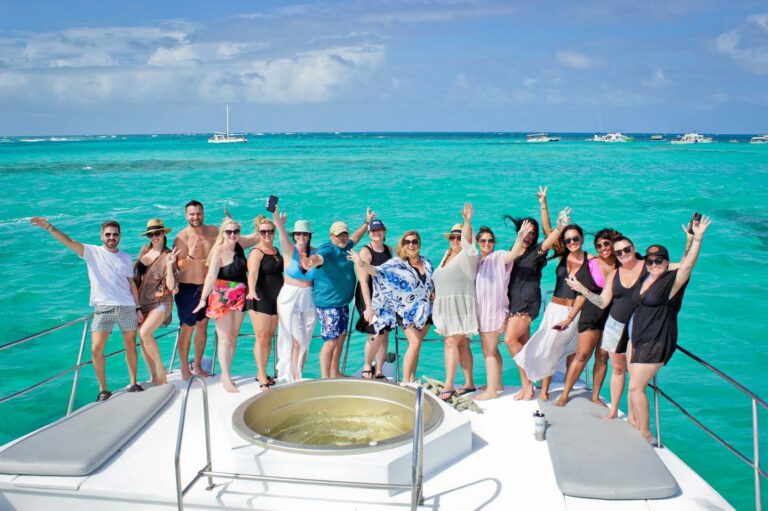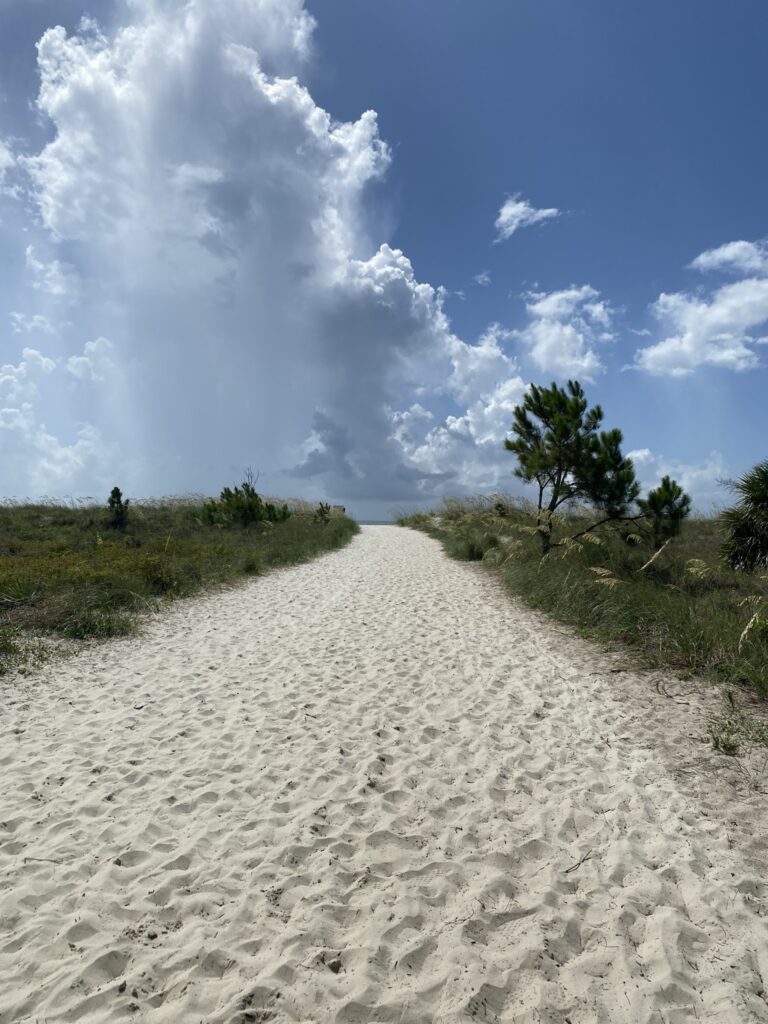Georgia Disney Travel Agents Near Me
We recognize that Disney vacations are not just an investment, but often the highlights of our lives, and we take that responsibility seriously. We want to ensure you have the best vacation experience.
Interested in a job in travel? Click here to learn: How to Become a Disney Travel Agent
Jump to section:
A B C D E F G H I J K L M N O P Q R S T U V W X Y Z
See our Disney travel agents near me.
Overview
Introduction
The largest state east of the Mississippi River is 300 mi/480 km from top to bottom, and 230 mi/370 km at its greatest width. The 9 million citizens of "The Empire State" or "The Peach State" practice southern hospitality, follow the Atlanta Braves religiously, eat more pork barbecue than fried chicken, prefer Coca-Cola over morning coffee and drink iced sweet tea—lots of it—from noon to night.
Most Georgians live close to the major cities, so visitors passing through the wide open spaces between cities may wonder if the population number is a misprint. These rural areas offer a tremendous variety of outdoor activities for sports enthusiasts, nature lovers and sun worshippers.
In Georgia, the past seems to intersect with the present at every turn in the road: The profiles of Confederate leaders gaze stoically from Stone Mountain; turn-of-the-century homes still gleam on the Golden Isles; and every town between Atlanta and Savannah displays its mementos of General Sherman's 1864 invasion.
Even present-day events seem tied to tradition. We happened upon a wedding in a Savannah park where women in elaborate hats sipped champagne beneath the moss-draped trees and a horse and buggy stood waiting for the bride and groom. It was a scene that could have taken place a century earlier, except for the crowds of T-shirt-clad gawkers (like us) who stood around admiring the scene.
For travelers, Georgia's historic awareness presents an opportunity to glimpse the culture of the Old South. You can tour vintage mansions and plantations, visit forts and museums and witness battle reenactments. The state is not trapped in its past—witness the amenities of cosmopolitan Atlanta or the contemporary arts and music scene of Athens—but the state's reverence for earlier times is one of its most endearing qualities.
History
Georgia's recorded history begins with the Native Americans who inhabited the region some 10,000 years ago and left evidence of their hunting and gathering cultures. Those belonging to the Mississippian Culture (AD 900-1200) built ceremonial mounds, some good examples of which have been preserved at the Ocmulgee National Monument, near Macon. Later, the Creek and Cherokee tribes lived in the area. Their settlements of 100 to 1,000 residents were often located along rivers.
The first European to see this region was explorer Hernando de Soto, who claimed portions of it for Spain in 1540. While the Spanish established missions on some coastal islands, their presence did not deter the British from claiming the same territory. The two countries jousted over the region until the Battle of Bloody Marsh in 1742, when an English victory secured it for King George II. The colony was named Georgia in his honor. It was the 13th and final of the original U.S. colonies to be established.
Following the Revolutionary War, Georgia was the fourth state admitted to the Union. Though the Creek and Cherokee nations made efforts to coexist with white culture, conflicts with settlers eventually led to the forced removal of these tribes to areas west of the Mississippi (an ill-fated event known as the Trail of Tears).
Large slave-powered plantations flourished in Georgia, and when the Civil War erupted in the 1860s, the state sided with the Confederacy. In 1864, Georgia suffered greatly at the hands of Union General William Tecumseh Sherman: After overcoming Confederate forces in northern Georgia, Sherman's army burned Atlanta and then made its infamous March to the Sea, destroying everything in a 60-mi-/100-km-wide swath. The war ended soon after. Georgia was readmitted to the Union in 1870, but the process of rebuilding its economy and society was slow and fraught with difficulties.
Though initially reliant on cotton, Georgia now depends upon industry (both textiles and high-tech), as well as communications, agriculture and forestry (it is the nation's leading producer of paper pulp). And, inspired by local leaders, especially the late Dr. Martin Luther King Jr., Georgians have worked together to redress injustices and set a course for social and economic progress.
Snapshot
Among Georgia's main attractions are southern culture, Savannah, Macon, Atlanta, historical sites, majestic mountains, antebellum mansions, scenic swamps, beautiful landscapes and wide, sandy beaches.
Because of the state's size and diverse geography, local culture and activities change with the surroundings. You can divide Georgia into four regions and you'll quickly notice that each area's geography, personality and trademarks are unique. North Georgia offers glorious mountain views, wild rapids, waterfalls, gold mining, bluegrass music, apples and antiques; The metro Atlanta area is a bustling, fast, work-hard-and-play-hard community with plenty of multicultural and civic pride, upscale dining and support for the decorative and performing arts; the heartland is full of antebellum heritage, movers and shakers, rock 'n' rollers, gospel music, peach orchards, pine trees, cotton fields and fresh vegetables; and the Golden Isles of the coastland offer barrier-island cottages, boiled shrimp and boiled peanuts, turtle walks by flashlight, dolphins and lighthouses.
Travelers who enjoy splitting their time between urban and rural attractions and who are interested in U.S. history will have a great time in Georgia. So will fans of shopping and southern cooking. Beach and sun worshippers will love the southern coast during the summer and early fall. Folks who like mountains will find an opportunity to explore the twists and turns of north Georgia's high-country roads, shot through with pretty rivers and waterfalls. They can hunt for antiques in the charming mountain towns and sample the homemade baked goods and crafts. Visitors who cannot tolerate a hot, humid climate will want to avoid Georgia's flatlands during summer months.
Potpourri
How many times have you asked yourself: "Why isn't there a national tick collection?" Well there is, and you can see it at Georgia Southern University in Statesboro.
Georgia has nurtured many famous musicians and music groups, including Little Richard, Otis Redding, the Allman Brothers Band, James Brown, Johnny Mercer, Jerry Reed, R.E.M., the B-52s, the Indigo Girls and Ray Charles. Other celebrities who have called Georgia home include Jimmy Carter, Hank Aaron, Jim Bowie, Ty Cobb, Jackie Robinson, Erskine Caldwell, Martin Luther King Jr., Julia Roberts, Evander Holyfield, Elton John and Herschel Walker.
The state song is "Georgia on My Mind" (written by Hoagy Carmichael, who was not a Georgian).
Eli Whitney invented the cotton gin near Savannah in 1793.
Just east of Atlanta, in Conyers, is the Monastery of Our Lady of the Holy Spirit. The friendly monks there grow and harvest their own food, and they sell their jellies and baked goods, including some of the best bread you're likely ever to taste. You can visit the church, grounds and gift shop, and even make arrangements to stay overnight and partake of a monastery breakfast. You'll bunk down for a nominal cost in one of the simple and peaceful public boarding rooms. Phone 770-483-8705 for information on accommodations. http://www.trappist.net.
If you eat chicken in Gainesville, the Chicken Capital of the World, you'd better use your hands: Eating it with a fork is illegal.
Georgia was the first state to allow 18-year-olds to vote (in 1943).
Ripe peaches are sold at roadside stands during the summer. From mid- to late March, every peach tree along the Peach Blossom Trail (Highway 341 from Jonesboro to Perry) is in bloom.
Georgia had its own gold rush in 1828 in Dahlonega, 40 mi/65 km northeast of Atlanta. The discovery of gold in the Blue Ridge Mountains sent a stampede of miners into what was then Cherokee country. The Dahlonega Courthouse Gold Museum traces the area's gold-dusted history with exhibits and a documentary film. Consolidated Mines also offers tours of the largest gold mine east of the Mississippi River.
Georgia's official state vegetable, the Vidalia onion, is the sweetest onion in the world. It is only grown in Vidalia and Glennville.
Overview
Introduction
During the years it was part of the Soviet Union, Georgia was the top destination in Caucasia, offering magnificent monasteries, historic sites and scenic mountains. Wedged between Russia and Turkey, with a long shoreline on the Black Sea, it was known for its balmy climate and its fabulous food and drink.
Georgia is one of the most fascinating countries in the region, and overall a safe place to visit, though travelers should avoid the separatist regions of Abkhazia and South Ossetia.
Evidence of the Georgians' determination to build a tourism business, particularly through infrastructure development, is widely evident. Much has been accomplished in recent years, but plenty remains to be addressed in order to reach international standards.
Geography
Georgia is bordered by Russia to the north, Azerbaijan to the east, Turkey and Armenia to the south, and the Black Sea to the west. Much of the country is dominated by mountains. The Caucasus Mountains form a natural border with Russia in the north, with the Lesser Caucasus along the border with Turkey to the southwest.
The Likhi Range links them running north-south through the center of the country. West of these mountains, particularly along the Black Sea coast, the climate is moderate, even balmy at times. The area east of the Likhis is colder and drier.
Snapshot
The chief attractions of Georgia are monasteries, fine wines, great food, mountainous terrain, historical and mythological sites, a beautiful coast, cave settlements, art and outgoing people.
Though parts of the country are too dangerous to visit, the rest of Georgia is an appropriate destination for adventurous people who are looking for someplace truly different.
Potpourri
Some of the oldest people in the world live in Georgia. Some villages near the Black Sea claim elders of 130 years and more. Supposedly, yogurt has something to do with the long lifespans.
Jason's quest for the Golden Fleece isn't the only mythological story set in the Caucasus Mountains. As punishment for giving the gift of fire to humanity, Prometheus was said to have been chained to Mount Elbrus. The Amazons, a legendary race of women warriors, were supposed to have lived on the banks of the Terek River. And Kutaisi is said to be the city of King Aetes and Medea, possessors of the Golden Fleece.
Hominid remains 1.7 million years old, the oldest in Europe, have been found at Dmanisi, near the border with Armenia.
Georgians have probably been making wine since the Bronze Age. They claim the word comes from the Georgian ghvino.
"Georgian Snickers" is an apt nickname for churchkhela, a chewy bar made by threading nuts and raisins on a string, dipping them in simmering grape juice and hanging them up to dry.
Most Georgian fortresses had a secret tunnel leading to a river escape route. Ask the caretaker of any castle you visit about the particulars of his place.
The square watchtowers of the Svan people, scattered around the town of Mestia, are more than 1,000 years old. Some 20 watchtowers are concentrated in Ushguli, which at 7,220 ft/2,200 m claims to be the highest permanently inhabited village in Europe.
The nation's name came from the Persian word for the inhabitants of the country: Gorj. The "Gorj," however, call themselves the Kartveli and their country Sakartvelo. It's pure coincidence that the country's patron is St. George.
Overview
Introduction
This small town, 60 mi/95 km southwest of Montgomery, is where singer Hank Williams Sr. spent his early years. The town hosts the Hank Williams Festival on the first weekend in June near the Hank Williams Sr. Boyhood Home and Museum. Largely a music festival, it usually includes both local performers and a Nashville headliner. Overview
Introduction
If you want to get a look at some of Ontario's better natural vistas without getting too far away from civilization, this drive along Lake Superior should fit the bill. It skirts the lake's shoreline and then takes you for a tour of the green islands of Georgian Bay. We recommend the tour for travelers who like the outdoors and who gravitate toward camping, fishing, canoeing and the like. Those who take more of an interest in shopping and sightseeing may find that this drive does not suit them.
The following route begins on Highway 61 at the border with the U.S. near Grand Portage, Minnesota, and moves east.
The first point of interest is Kakabeka Falls, a scenic cascade that measures 128 ft/39 m (get there by taking Highway 11/17 west off Highway 61) and is considered "The Niagara of the North" for its size—in this case, the vertical drop. Next, head east on Highway 11/17 into Thunder Bay, Canada's sixth-largest port.
Visit Sleeping Giant Provincial Park for hikes and bird sightings; then take a cruise of the harbor and visit Old Fort William, a living-history museum with costumed re-enactors skillfully depicting the fort's heydays when it was known as the North West Company during the fur trade more than 200 years ago. If you have time, visit the amethyst mines, where you can hunt for your own gemstones, or see the International Friendship Gardens or Mount McKay (1,000 ft/300 m tall).
Just outside of town is the Terry Fox Monument, a tribute to the courageous marathoner who tried to cross Canada after losing a leg to cancer. His quest ended near this site in 1980. Fox made it halfway across Canada on one leg, raising funds and awareness for cancer research and has since raised more money for cancer than any other individual. Each September, on the second Sunday after Labor Day, Canadians from coast to coast participate in the Terry Fox Run to continue raising funds.
From Thunder Bay, take Highway 17 east to Marathon, where you'll pick up Highway 627 south to Pukaskwa National Park for a walk along the shores of Lake Superior. There's a lengthy trail if you want to take an overnight hiking trip, and there's plenty of canoeing in the rivers feeding into Lake Superior. Quetico Provincial Park (west of Lake Superior on Ontario's southern border) preserves one of the greatest concentrations of Native American rock paintings on the continent. There are more than 28 sites in and around the park.
Back on Highway 17, look for the big goose (you'll know it when you see it) as you drive through Wawa. Not long afterward, you'll pass straight through the heart of Lake Superior Provincial Park. Stop to see the Indian Pictographs at Agawa Bay (which may have been the inspiration for Henry Wadsworth Longfellow's Song of Hiawatha). South of the provincial park, you'll leave Lake Superior as you head into Sault Ste. Marie. This is one of Canada's major industrial and shipping centers, which lies across St. Mary's River from Sault Ste. Marie, Michigan. Take a cruise of the canal and locks that allow ships to move from Lake Superior to Lake Huron.
While you're in the area, don't pass up one of the most interesting and scenic rail outings in Canada, the Agawa Canyon train trip. This moderately priced tour, which runs late spring through fall, is usually taken as a day trip. It passes through gorgeous countryside, and during the summer, a two-hour stopover allows you to get closer to the trees, waterfalls and mountains (in the fall, the changing leaves look stunning). There's also an overnight tour that operates during the summer.
From Sault Ste. Marie, head east on Highway 17 to Espanola, and then go south on Highway 6 to Manitoulin Island—the world's largest freshwater island. Lots of little ports and villages and 1,000 mi/1,600 km of coastline comprise the island. There's not all that much to do on the island, but we think it's fun to explore the beaches and do some fishing.
From the southern tip of Manitoulin Island, take the Chi-Cheemaun Ferry to Tobermory, which is home to two unusual attractions. At Fathom Five National Marine Park, you can go scuba diving around 20 sunken ships. If you don't scuba dive, you can still see the wrecks by snorkeling or via glass-bottom boat. (The boat will take you to Flowerpot Island, where you can see some strange rock pillars with trees growing on top.) Drive south on Highway 6 to Hepworth, where you'll take Highway 70 southeast to Owen Sound. The Grey County Museum documents life in the 19th and 20th centuries and houses an exhibit dedicated to native culture.
Next, take Highway 26 east to Wasaga Beach, Highway 92 northeast to Elmvale, Route 19 northeast to Moonstone and Highway 400 north to Honey Harbour, where you can take a water taxi to Georgian Bay Islands National Park, a beautiful collection of 59 islands. When you're back on the mainland, conclude the tour by heading south on Highway 400 toward Toronto.
Overview
Introduction
The main island in the Western Province area, New Georgia was the scene of vicious fighting during World War II. Nowadays you will find interesting tribes, beautiful scenery, opportunities for relaxation and good reef diving among manta rays, sharks, turtles and colorful fish.
Most prominent of New Georgia's towns is Munda, just 30 mi/50 km southeast of Gizo. It's a major transportation and governmental center for the region. Munda has a clean and comfortable hotel and makes for an interesting two-night visit (the town and its airstrip were a major objective for U.S. troops). Munda also has two simple but comfortable resorts on tiny islands offshore (both places are good for Robinson Crusoe-style escapes). The commercial center is now in a town called Noro, built around a fish-processing plant. New Georgia is 190 mi/300 km northwest of Honiara, Guadalcanal.
Overview
Introduction
South Georgia holds a special place in Antarctic history. After enduring one of the most harrowing boat journeys of all time, explorer Ernest Shackleton landed on its rocky shores with great relief. He then crossed the island with no more than a compass to seek help for his crew. Today's visitors may share the feeling after crossing the Drake Passage, where they can follow in his footsteps, walking the final leg of the hike he made across the island to reach help. They can also visit his grave and the South Georgia Museum at Grytviken, the first whaling station built on the island (in 1916). Exhibits include displays on the island's natural history, whaling and sealing, exploration and mountaineering expeditions, as well as a lifeboat from the whaling vessel Southern Star. The town also has a post office, a gift shop with items made on the island and several king penguin colonies.
Vincent Vacations - Authorized Georgia Vacation Planner
Questions? Call us at
1 (888) 976-0061
No-Obligation Georgia Vacation Quote Request Form
Free Vacation Package Quote
For Groups of 10
or more rooms, or 8 or more Cabins, please use of Group Form
Click Here for our Group Department



































